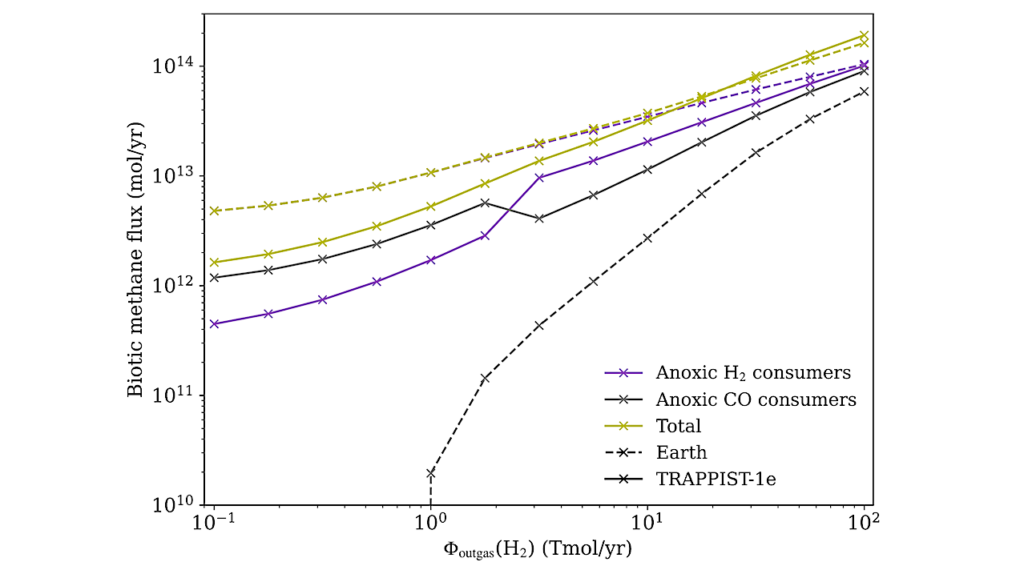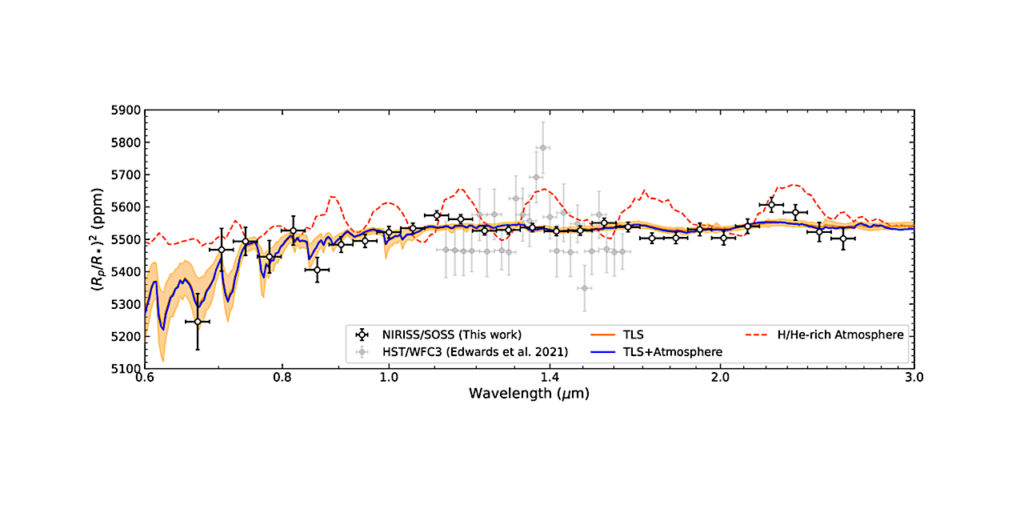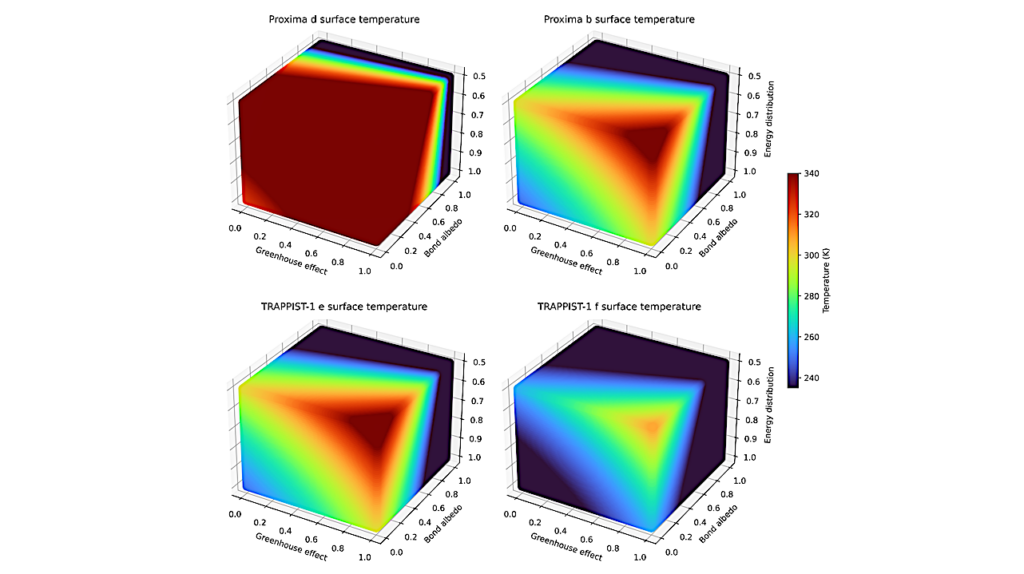Bistability Of The Atmospheric Circulation On TRAPPIST-1e

Using a 3D general circulation model, we demonstrate that a confirmed rocky exoplanet and a primary observational target, TRAPPIST-1e presents an interesting case of climate bistability.
We find that the atmospheric circulation on TRAPPIST-1e can exist in two distinct regimes for a 1~bar nitrogen-dominated atmosphere. One is characterized by a single strong equatorial prograde jet and a large day-night temperature difference; the other is characterized by a pair of mid-latitude prograde jets and a relatively small day-night contrast. The circulation regime appears to be highly sensitive to the model setup, including initial and surface boundary conditions, as well as physical parameterizations of convection and cloud radiative effects.
We focus on the emergence of the atmospheric circulation during the early stages of simulations and show that the regime bistability is associated with a delicate balance between the zonally asymmetric heating, mean overturning circulation, and mid-latitude baroclinic instability. The relative strength of these processes places the GCM simulations on different branches of the evolution of atmospheric dynamics.
The resulting steady states of the two regimes have consistent differences in the amount of water content and clouds, affecting the water absorption bands as well as the continuum level in the transmission spectrum, although they are too small to be detected with current technology. Nevertheless, this regime bistability affects the surface temperature, especially on the night side of the planet, and presents an interesting case for understanding atmospheric dynamics and highlights uncertainty in 3D GCM results, motivating more multi-model studies.
Denis E. Sergeev, Neil T. Lewis, F. Hugo Lambert, Nathan J. Mayne, Ian A. Boutle, James Manners, Krisztian Kohary
Comments: 31 pages, 14 figures, accepted to the Planetary Science Journal
Subjects: Earth and Planetary Astrophysics (astro-ph.EP); Atmospheric and Oceanic Physics (physics.ao-ph)
Cite as: arXiv:2207.12342 [astro-ph.EP] (or arXiv:2207.12342v1 [astro-ph.EP] for this version)
Submission history
From: Denis Sergeev
[v1] Mon, 25 Jul 2022 16:58:42 UTC (5,845 KB)
https://arxiv.org/abs/2207.12342
Astrobiology,








